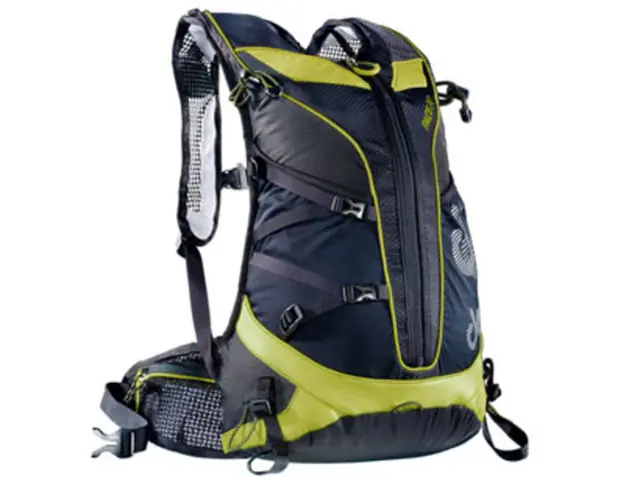Sheltering from War's Chill: Personal Bunkers in the Crossfire - Civil Defense Remains Inconclusive
- by Gernot Kramper
- 4 Min
Germany's Bunker Construction: No Immediate Civil Defense Strategy Implemented - Germany witnessing bunker construction; no immediate plans for civil protection
Preemptive Security Solutions sells a top-notch bulletproof vest on their website for a steep 599 euros - if discount retailers begin selling such items, it's a chilling sign. It's uncertain if buyers are driven by fear of crime or fear of impending Russian threats. Since 2022, there's been a surge in demand for such products that echoes the escalating geopolitical tension.
But what about civil defense in times of crisis? While the German state retains an inventory of 579 public shelters that cater to civil defense, these spaces are largely redundant. According to the Federal Office for Civil Protection and Disaster Assistance (BBK), they can house approximately 477,593 persons. However, most of these shelters are not readily deployable. Post-Cold War neglect, unending sales, and repurposing have left these spaces in poor condition. With a bit of reactivation, the government could utilize these assets. Countries like Switzerland boast shelter infrastructure capable of sheltering nearly their entire populace.
Bunkers: Not a Permanent Barrier
In ideal circumstances, these spaces shield not only from bombs but are also equipped with air filters and can supply occupants with water and food for several days. However, they are not doomsday bunkers like those built by the affluent or designed for government and military leaders. These bunkers are created to protect their residents for longer durations and are resilient against direct attacks. Public shelters, on the other hand, provide minimal protection in the event of an all-out nuclear war and contamination - they would delay the inevitable return to the surface by days, at most two weeks. For the bleakest scenario of widespread atomic contamination, there is no protection for the general populace. The scenario varies for air attacks or rockets carrying conventional warheads.
What Kind of Protection Do We Need?
The mind tends to conjure up extreme cataclysms - from the mammoth nuclear war to the zombie apocalypse. Realistically, the situation during Russia's conflict with Ukraine can serve as a precedent. Systematic aerial bombardment of residential areas as a primary strategy is rare; usually, the focus is on military targets. Despite this, there are significant civilian casualties, as evident in the flattened front lines of Ukraine. People who refuse evacuation remain during the fights. Drone attacks on energy infrastructure indirectly endanger the civilian population; however, they have nothing to do with bunker protection.
Lack of systematic attacks doesn't mean civilians are safe. In the battle between air defenses and flying objects, the rule is simple: "What goes up must come down." This pertains to bullets from machine guns and cannons. Intercepted or misdirected airborne objects will crash and potentially explode at their destination. The same applies to interception rockets that miss their mark. A peculiarity of the Ukraine conflict is the blurred lines between civilian and military use: military weapons are transported with civilian vehicles and hidden in ordinary warehouses. Those who remain nearby are at risk.
What Does This Mean for Germany?
Even without a nuclear war or systematic bombardment of residential areas, the populace is still vulnerable to "incidental hits." This can happen in public shelters, suitable cellars, or underground subway stations - as shown by images from Kyiv's Metro. You'll have to take care of roofs, water, and provisions yourself. Since cities are seldom completely destroyed, such strikes can often be survived in many cellars. Even if the entrance is buried, occupants can typically be rescued in time. The BBK also recommends a 14-day emergency supply for power outages or evacuations.
The challenge with this style of aerial warfare lies in the populace's exhaustion. The sheer volume of missiles, cruise missiles, and especially drones used against Ukraine presages an even higher use in future conflicts. In densely populated areas or near strategically significant facilities, there could be air alerts night after night and day after day. But nobody wants to live their life in a cellar as long as the probability of becoming a victim remains low. Most people will eventually become numb and return to their regular lives in their own beds.
Alternatives: Personal Shelters
Countries like Switzerland and Finland promote the construction of personal shelters; in some cases, it has even been mandatory. In Germany, at least, there are discussions in this direction. The issue: Even a shelter comes at a price. If a new apartment building had a dedicated bunker space for every flat, housing prices would soar even further. A fully equipped shelter with backup power, water, food, and air filters also requires ongoing maintenance and resupply costs. A simple, heavily reinforced cellar room with protected entrances and basic ventilation is cheaper. The government is currently examining whether public buildings like schools could serve as shelters. However, this is questionable, especially considering the large window areas.
Protection Comes at a Cost
Homeowners have the final decision, but they'd have to bear substantial costs. Rough estimates start at 30,000 to 40,000 euros for an armored shelter in a new building. With increased protection levels and better equipment, costs likely exceed 60,000 euros. A retroactive installation - in the basement or separately in the garden - will cost significantly more and can easily surpass the 100,000-euro mark. Again, such facilities only offer temporary protection and are not designed for long-term survival. And is it even worth it? Imagine living in a Kyiv suburb and owning a shelter: Would you spend years sleeping there with your family? Or would you spend afternoon and evening hours in that cramped space during air alerts? Would your teenage offspring cooperate? Doubts are inevitable. One fact remains: If ground combat reaches your own city, such a room would be invaluable.
It's far more affordable to stock up on essentials like food and water for emergency situations. A small backup generator or large mobile power bank can also be helpful. The Norma vest with steel plates is heavy and provides protection against handguns. However, it may hinder more than help in a knife attack. It's useless against military enemies like the Russians. In the Ukraine conflict, soldiers frequently wear vests with groin protection as enemy forces often target the lower abdomen.
- Shelter
- Federal Office for Civil Protection and Disaster Assistance
- Preemptive Security Solutions
- Norma
- The Federal Office for Civil Protection and Disaster Assistant (BBK) suggests that every individual in Germany should have a 14-day emergency supply for power outages or evacuations, as residential areas can still be affected by "incidental hits" during a conflict like the one in Ukraine.
- Some countries, like Switzerland and Finland, have made personal bunkers mandatory for their citizens, and there are discussions in Germany about a similar move, but the cost of building personal shelters for every household can be high, starting from around 30,000 to 40,000 euros.
- Other protective measures, such as purchasing personal protective equipment like the Norma vest with steel plates, should be considered with caution. While it may offer some protection against handguns, it is no match for military enemies and may hinder more than help in other situations.







